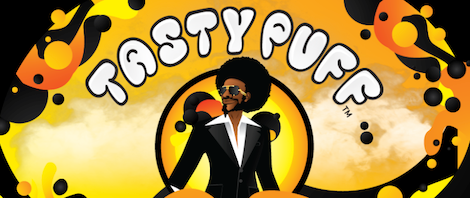However, recent research reveals that the temperature at which cannabis concentrates are dabbed plays a large part in determining if harm reduction is actually being achieved. Are a large portion of those who dab cannabis concentrates and perceive better health outcomes fooling themselves?
Two factors influence the dabbing temperature safe zone: The boiling points of the desired target molecules (terpenes and cannabinoids) and the temperature at which residual solvents, toxins, and other undesirable chemicals begin to appear.
The boiling point of a terpene or cannabinoid is when the molecule reaches a temperature at which it vaporizes and can enter a stream of air to be inhaled by a consumer. Chemically speaking, vaporization is very different from combustion, resulting in a distinctly different set of molecules.
The hard stop ceiling for dabbing/vaporization temperature is 451° F (233° C) because this is when combustion begins to occur and a pure vapor stream is no longer being created. However, recent research and data indicate that residual solvents and other potentially damaging molecules may form at temperatures below where combustion occurs.
Despite its ironic coincidence with the 420 holiday of the cannabis culture, 420° F (216° C) actually falls squarely in the safe zone of what should be employed for relatively responsible dabbing in terms of potential health outcomes. 420° F achieves the boiling points of the desired terpenes and cannabinoids while avoiding the higher temperatures (430° and above) where residual solvents and other toxins begin to appear in small quantities.
The lowest temperature at which a marijuana concentrate can properly be vaporized to ensure the greatest potential bioavailability is subjective and varies depending on the product being considered. For example, suppose a cannabis concentrate is heavy on THCA (the non-psychoactive acidic precursor to and creator of delta-9 THC). In that case, this cannabinoid vaporizes at the relatively low boiling point temperature of 220° F (104° C). However, if the appetite-suppressing terpene humulene is present, it won't vaporize until 388° F (198° C). And if the pain-fighting cannabinoid CBC is present in quantities that might deliver positive efficacy to a human, 428° F (220° C) is necessary to achieve vaporization. One powerful takeaway: The boiling point of the pain-fighting cannabinoid CBC is nearly double that of fellow cannabinoid THCA. This is why the dab temperature of 430° is arguably so desirable: It ensures the vaporization of most terpenes and cannabinoids but prevents the formation of toxins.
The optimal vaporization temperature of any loose-leaf or concentrated cannabis is determined by the exact mix of cannabinoids and terpenes and, more precisely, their respective boiling points. Thus, since it is difficult or impossible to predict the exact terpene and cannabinoid profiles of a given concentrate, let's for practicality assume that 400° F (204° C) will reach the boiling points of most or all desired molecules, resulting in their vaporization, inhalation, and ultimate bioavailability (if everything else goes smoothly).
Read More, Learn More: Higher Learning LV




















